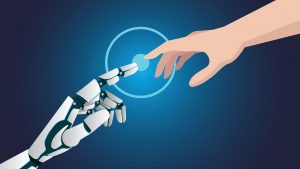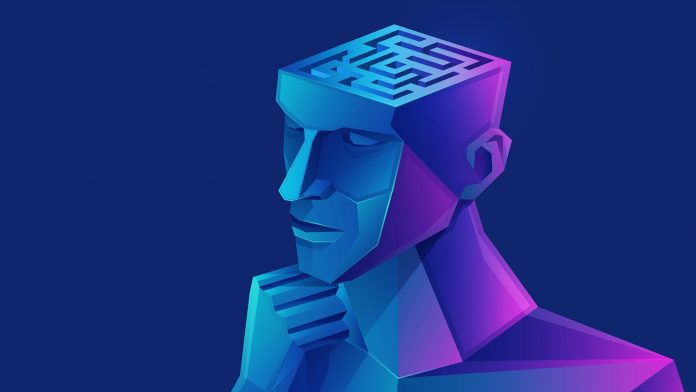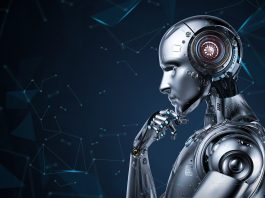Olaf Baunack, VP of Sales Financial Services & Insurance at Intellias, addresses whether the rise of AI and Large Language Models is a threat to human creativity and labour.
The rapid rise of Large Language Models (LLMs) and generative AI over the past year has opened our eyes to the vast potential offered by these technologies. However, there are valid concerns about how much human creativity they can replace.
While the first wave of automation impacted manufacturing via robotics, this latest threatens the white-collar world of lawyers, writers and teachers. How worried should we be?
We have seen a plethora of AI-related projects for businesses, from driving decision-making in finance services to providing instant, rich analysis for businesses at board level. However, while there is a tremendous amount of hype around, there is also considerable fear, particularly around public availability of data, the impact on human labour, and other concerns. So, let’s take a look at how AI and human creativity might work together.
Speeding up mundane tasks
There is no doubt that AI is incredibly helpful at automating tedious tasks across several fields, freeing employees to focus on higher value work. Some of the most popular uses include process automation, customer support, data entry, predictive maintenance, and beyond.
AI is well equipped to take on these tasks, allowing us to concentrate on more strategic and creative aspects of our jobs.
The key is that while AI can be a powerful tool to improve productivity and efficiency, it should be integrated into the workplace thoughtfully and ethically. Organisations should strive for a balance between automation and human creativity, ensuring that AI enhances human capabilities and supports workers rather than replacing them entirely.
Combining human creativity with AI
There now exists a remarkable opportunity to unlock new frontiers of innovation and problem-solving by fostering a culture of collaboration. Encouraging open communication and teamwork between humans and AI systems allows for the exchange of ideas, insights, and expertise. Human creativity can fuel AI algorithms with novel data inputs, while AI can assist humans by identifying patterns and possibilities they might have overlooked.

However, providing the right tools and training is critical. Equipping employees with the skills to work effectively with AI technologies will empower them to exploit the full potential of these systems. Training should encompass not only technical aspects but also emphasise critical thinking, problem-solving, and ethical considerations related to AI usage.
At the same time, we must understand AI’s limitations. While AI excels in data processing and pattern recognition, it lacks uniquely human qualities, such as emotional intelligence and empathy. Recognising these boundaries helps ensure that humans remain actively engaged in tasks that require empathy, emotional understanding, and creative thinking.
Enabling smarter decision-making
We have examined how AI can impact human creativity and speed up routine tasks. Still, it is also becoming increasingly important for analysing C-Level decisions and transforming core business functions.
Let’s take financial services as an example. AI-powered risk models can evaluate complex financial scenarios and assess potential risks associated with investments, loans, or business ventures. By providing risk analysis in real time, AI helps decision-makers mitigate potential losses and optimise risk management strategies.
AI can also play a key role in fraud detection and prevention, monitoring transactions and identifying suspicious activities, helping financial institutions combat fraud more effectively. Moreover, it can help with personalised financial planning: say you buy a new e-bike and post the news on Facebook; your AI-powered insurance provider should be alert to the purchase, know you are an existing customer and reach out with a customised deal.
AI can impact human creativity across various sectors, such as healthcare, where it can help support medical decision-making and analysis. From enabling detailed diagnoses in real-time to developing personalised healthcare plans to managing clinical trials, AI has the power to provide clinicians with valuable insights and evidence-based guidance. This leads to improved patient care, better outcomes, and a more efficient healthcare system.
Focusing on the user experience
Although AI clearly has a significant part to play in many aspects of the modern workplace, we must also be careful about how it is deployed. The hype is leading many to push out AI-based services without considering how it fits into the broader consumer experience. It is vital, therefore, to communicate with customers to find out how best AI fits into how they interact.
By following a customer-focused strategy and leveraging AI or other technologies to address specific user needs, organisations can avoid falling into the trap of adopting AI for the sake of it. The result will be a more meaningful, impactful, and satisfying user experience that resonates with customers and drives long-term success.
Thinking outside the box
Often, when considering AI, companies are thinking big, which drives down the speed of deployment. My advice is to think outside the box and be provocative. Conduct as many tests as fast as you can, rather than taking eighteen months to implement. It’s essential to challenge the status quo, consider unconventional approaches, and prioritise human creativity to ensure responsible and transformative AI deployment.
There are other ways in which we can go beyond conventional AI approaches: ethical AI, human-centred design, and explainable AI are examples of methodologies that push the boundaries of current AI. By adopting these alternative perspectives, organisations can deploy AI in ways that align with their values, positively impact society, and create more sustainable and meaningful solutions for the future.
Where next?
AI has turned the world on its head in just ten short months; who knows what will happen in the next year? As quantum computing continues to make advances, it will have an important role to play in the evolution of the technology, providing the ability to do calculations and combinations on an unheard of scale. It is impossible to predict. However, it is safe to say that AI will continue to surprise us, and human creativity will hopefully always be at the heart of it all.
Ultimately, combining human creativity with AI necessitates building a foundation of collaboration, skills, and understanding. By fostering a symbiotic relationship, we can unleash the full potential of AI while preserving and amplifying the uniquely human attributes that drive creativity and innovation. So, no need to worry after all.









